Getting one of the best hiking GPS watches you can, can make the difference between a great hiking adventure and a pretty difficult one.
Global Positioning Software, or GPS, is one of the most convenient inventions of the last couple of decades. Where for so long we were reliant on maps, with countless family holidays threatening to break out into all-out war between bickering couples, now all we need to do is tell a robotic friend where we’d like to be for directions and bearings.
Contents
Of course, we’re not even restricted to using this technology in our cars any longer. Hiking watches are an essential addition to any adventurer’s repertoire; helping you to navigate as well as keep an eye on elements such as altitude and air pressure, as well as allowing you to work around sunrise and sunset times.
They’ll even tell you the time, too! Whatever next.
Of course, there are a number of factors to consider when selecting a hiking watch, and this guide will talk you through what to bear in mind before investing in one of these frequently expensive items, in addition to a number of recommendations.
CASIO Smart Watch WSD-F20 Protrek Smart
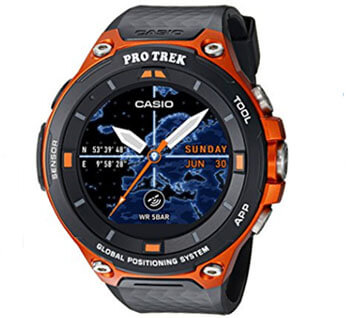
Casio are slowly building a reputation in the field of smart watches, and the WSD-F20 Protrek Smart is a definite step in the right direction for this tech giant.
Acting as the ideal bridge between status symbol smart watch and rugged piece of sporting equipment, if you run an Android smartphone there’s plenty to love here – Apple users beware, you are very much an afterthought in this instance.
As far as GPS equipped timepieces go, however, this jack of all trades is well worth a look.
PROS – Military-standard timekeeping, easy to change the (ever-pleasing) design on the watch face, waterproof up to fifty feet and able to notifications from your Android phone and all the features that we recommend in our buyer’s guide – there is plenty to praise when it comes to the WSD-F20 Protrek Smart, which suggests that Casio will soon become serious players.
CONS – The battery life is far from brilliant at less than 24 hours if you leave the GPS enabled. Granted, it lasts significantly longer if you only use the WSD-F20 as a timepiece, but that’s akin to buying a sports car to drive to the supermarket. It’s also really designed for use with Android phone – Apple users will have limited functionality.
Garmin Fenix 5X
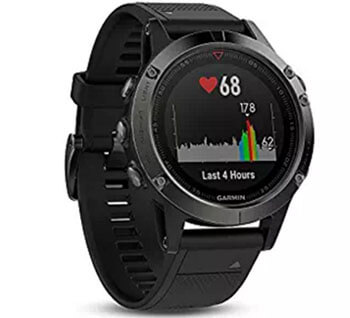
Still shopping at the high end of the market, the Fenix 5X is the Rolls Royce of timepieces for the serious hiker.
The price may put some people off, but this model comes loaded with everything that you could possibly wish for.
Wi-Fi enabled, waterproof up to 100 meters, packaged with built-in compass, barometer, altimeter and heart rate monitor, reliable GPS, syncable to a smart phone and social media profile and with a wide, clear screen, if you can imagine something that you wish for hiking watch could do, it’s a safe bet that the Fenix 5X does just that.
PROS – Every feature you could possibly imagine, in addition to a battery life of up to two weeks and aesthetic splendor. Truly, this watch is a thing of beauty.
CONS – Some will struggle to get past that price tag,. It’s true that you get what you pay for with the Fenix 5X, but this is one for only the most dedicated.
Garmin Fenix 3 GPS Watch
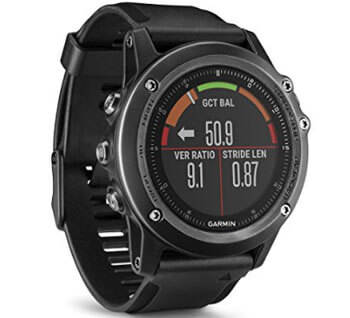
Something of a little brother to the model above, or at least a younger cousin, the Fenix 3 is slightly more basic and functional but no less effective than the 5X.
Packed with all of the essential features that a hiker will benefit from such as a compass, barometer and altimeter, as well as tracking GPS and a fortnight of battery life – even if you leave the watch connected 24/7. It’ll even track your sleep patterns for you.
PROS – Smart watches are often pretty ugly on the display, but the Garmin Fenix 3 is classily elegant as well as being hugely user-friendly – you’ll be able to flick through the variety of features in a matter of seconds.
The sapphire lens is extremely hardwearing, and you can use this watch for far more than just hiking; just every sport or outdoor pursuit is covered by the features of this gadget.
CONS – This watch is still pretty costly, and it may be in your interests to save up just a little more and really push the boat out for the 5X.
Suunto Ambit3 Peak HR Running GPS Unit
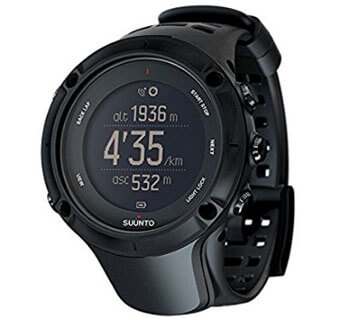
Arguably the most pure hiking watch on our list, the Suunto Ambit3 Peak HR Running GPS Unit is reasonably priced and contains everything that you should find yourself requiring – if pushed, we’d call this one our star buy.
Where it falls down slightly, alas, is the size and weight – this is a bulky number that most certainly will not be mistake for a standard wristwatch.
There are few models that are better use while hiking, however, and the Suunto Ambit3 Peak HR Running GPS Unit is even waterproof up to 1,000 feet, meaning that you don’t need to panic if you lose your footing and take an impromptu dip.
PROS – This watch features everything that you’ll find on the Garmin3 – compass, barometer and altimeter, heart monitor, smartphone connectivity – with arguably a more reliable GPS service.
CONS – This watch does everything you could possible ask – expect sit subtly on your wrist. It’s by far the bulkiest item in our guide, and anybody with strong views on aesthetics or keen to avoid having something too heavy and cumbersome on their person might struggle with the Ambit3.
Garmin eTrex 30x
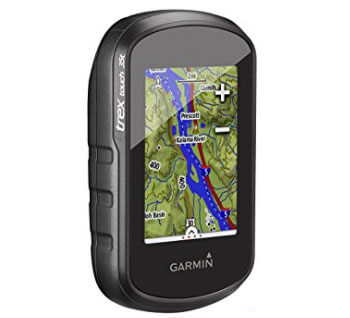
There could be a multitude of reasons why you prefer not to use your watch as a GPS device and would rather carry a tracker in your pocket, and if that’s the case we recommend the Garmin eTrex 30x.
Pre-loaded with worldwide maps, a huge internal memory for future updates, a compass, barometer and altimeter, all at just 6oz.
The battery life is also plentiful, and the screen – while small – is easy to read if your eyesight is up to the task thanks to the HD display.
PROS – Water- and shock-resistant, light as a feather, easy to slip into the palm of your hand and loaded with all the essential features that any hiker will benefit from – for a fraction of the price of many GPS watches.
CONS – Such a small and light design obviously comes with a small screen – make sure that you can actually read the display. Also, as this is a buyer’s guide to GPS watches, it should also be noted that this unit is of little to no use as a timepiece.
Buyers Guide to Hiking GPS Watches
Of course, a hiking watch should include a great number of features that a hiker will find useful.
Key among these are a barometer, altimeter and compass; wearing all three of these items on your wrist will give you at least three fewer items to carry and rummage for in a backpack as and when needed.
They really can be a nifty or handy item to compliment your explorations without lumbering yourself with other gadgets or copious amounts of dog-eared maps.
The use of a compass is self-explanatory when it comes to navigating your way through unfamiliar terrain, while the barometer element will react according to atmospheric pressure, making it helpful for predicting the elements and ensuring that you are less likely to be trapped in a downpour or potentially dangerous thunderstorm, which can be very useful if traveling with children and you can then find adequate shelter from the elements.
Storm Warning
Some models will also come equipped with a storm warning alarm if the barometer detects dangerously low counts that warn of impending adverse weather. The altimeter will detect how high you are above sea level, which will greatly enhance the reliability of the GPS tracking system on your watch – the higher you are, the easier it will be to read and follow instructions.
GPS & Maps
Of course, it’s GPS that is arguably the most important element here.
Picking up worldwide satellites, a GPS hiking watch should be able to pinpoint exactly where you are at any given moment, and help you find your destination – wherever that may be.
Obviously many modern-day cell phones also come with GPS built in, but a hiking watch will be infinitely more reliable, in addition to not being reliant on a signal and the ever-precarious battery life of a smartphone.
GPS maps can be updated regularly with downloads from the internet, allow favorite journeys to be programmed (including set destinations, such as where you parked your car), and will also keep an eye on many of your key statistics such as your distance covered, average walking speed and estimated time of arrival.
This makes watches particularly useful as well for those attempting to track time and mileage for reasons such as health and even losing weight.
Battery Life
There are a number of things that should be taken into consideration when looking to purchase a GPS hiking watch or a handheld model. Of course, primary among these is the battery life.
These devices may last considerably longer than a smartphone but they still have a great many features running simultaneously – at the very least, you should not consider a model without the ability to recharge regularly and conveniently.
Rubber Strap
You should also always look for a rubber strap, as opposed to the more aesthetically pleasing leather that you would associate with a traditional wristwatch.
Rubber expands in warm weather, meaning that you will not find your circulation struggling when the sun beats down upon you, and is easily wiped clean with a little water should accidents happen.
Size & Weight
Size and weight are also important, as if you’re loaded down with a backpack and other items to carry you will not be looking for excess weight on what is ultimately an item of clothing.
It can be a fine balancing act between the perfect slim line watch and a screen that’s large enough to make everything that you plan to use the watch for legible, but as GPS hiking watches are designed for this very purpose you shouldn’t struggle to find the appropriate model.
Accuracy
It should go without saying that accuracy is essential, not only in terms of the GPS service but in timekeeping.
Finding yourself out of sync with sunrise and sunset could cause major problems with judging when to make camp or even eat, and incorrect readings largely defeat the object.
Analog or digital is entirely down to your preference, but in a pinch the latter may be easier to keep a quick eye on.
Finally, make sure you pick a watch with a backlight! Things can get pretty dark in the woods at night, and there’s nothing to gain by stopping to peer at a screen that you cannot read.
So there’s plenty to consider when picking the best GPS hiking watch, and that’s a whole lot of searching to look into. Thankfully, we have done that hard work for you; so keep reading for five recommendations on the finest pieces of hiking hardware that can be picked up online today.
